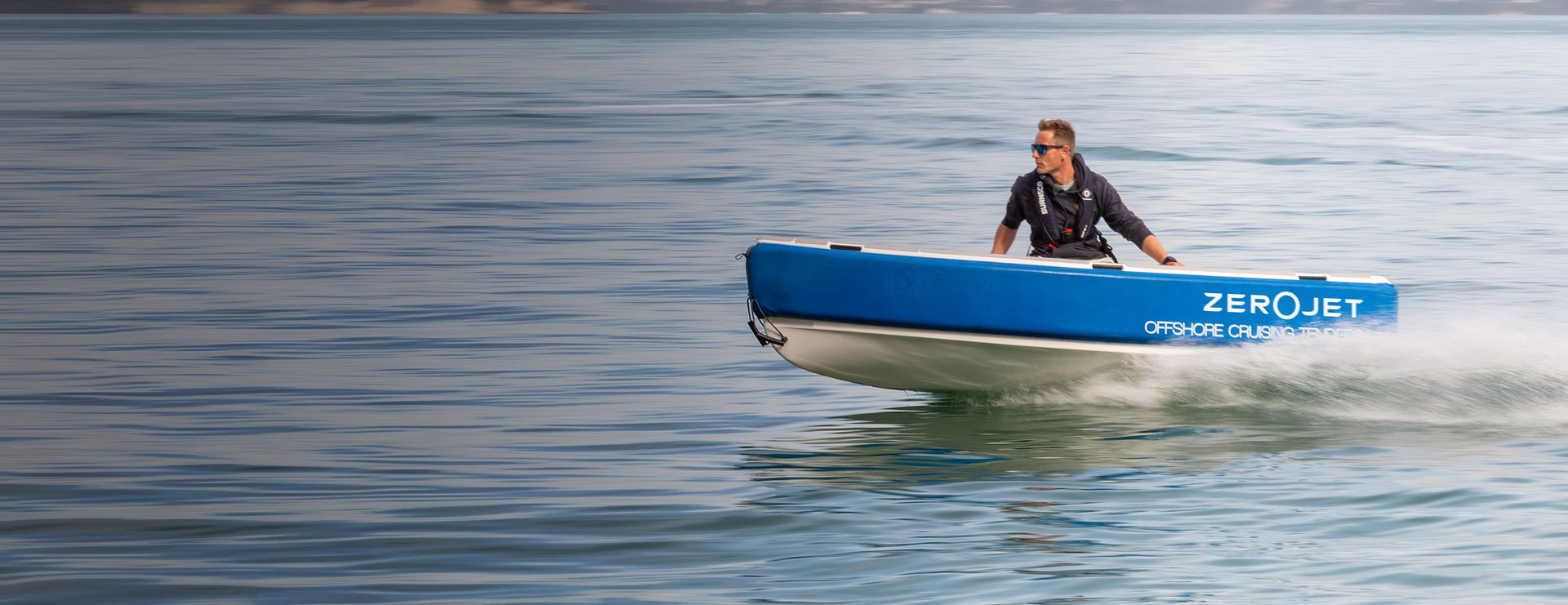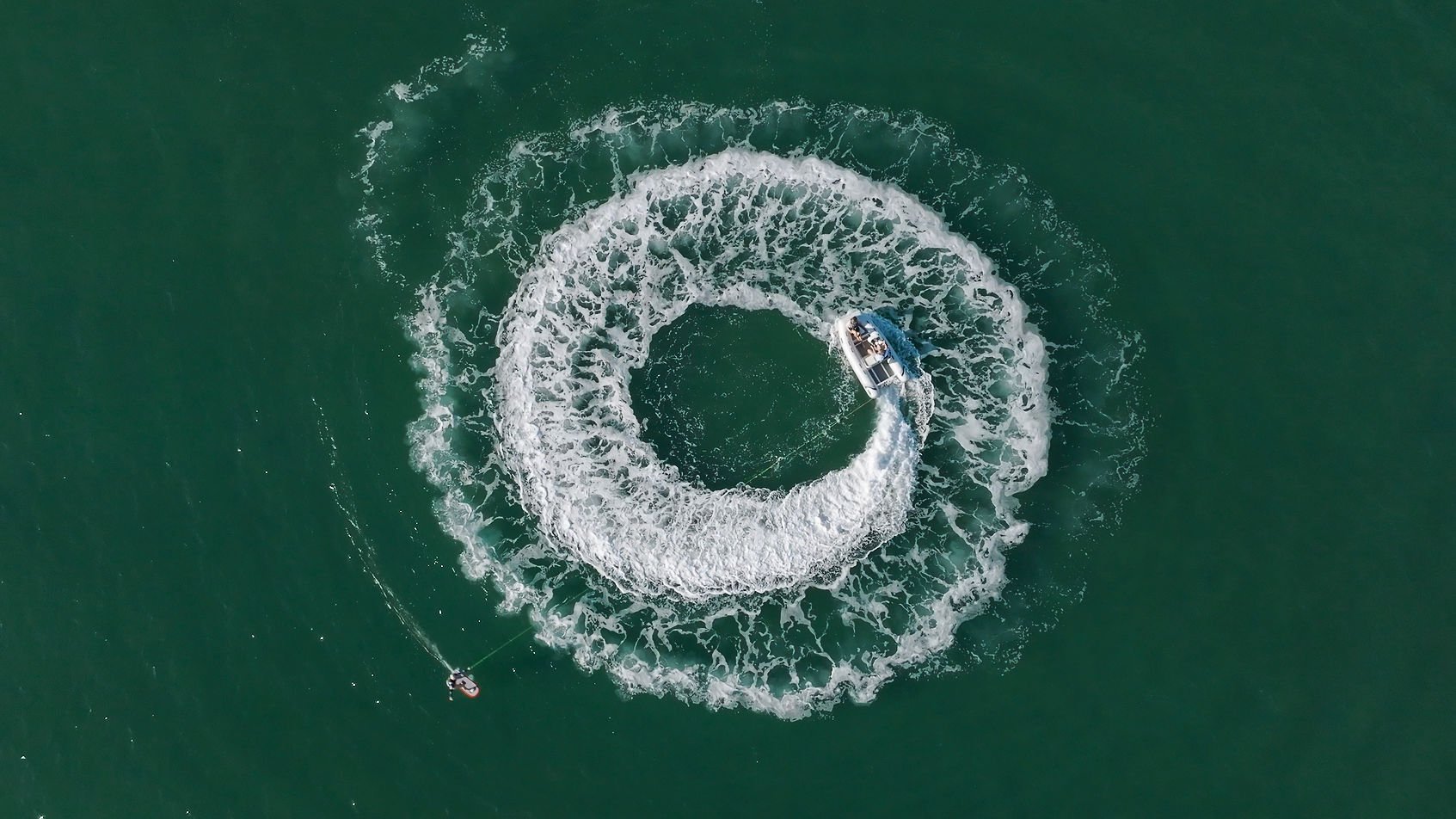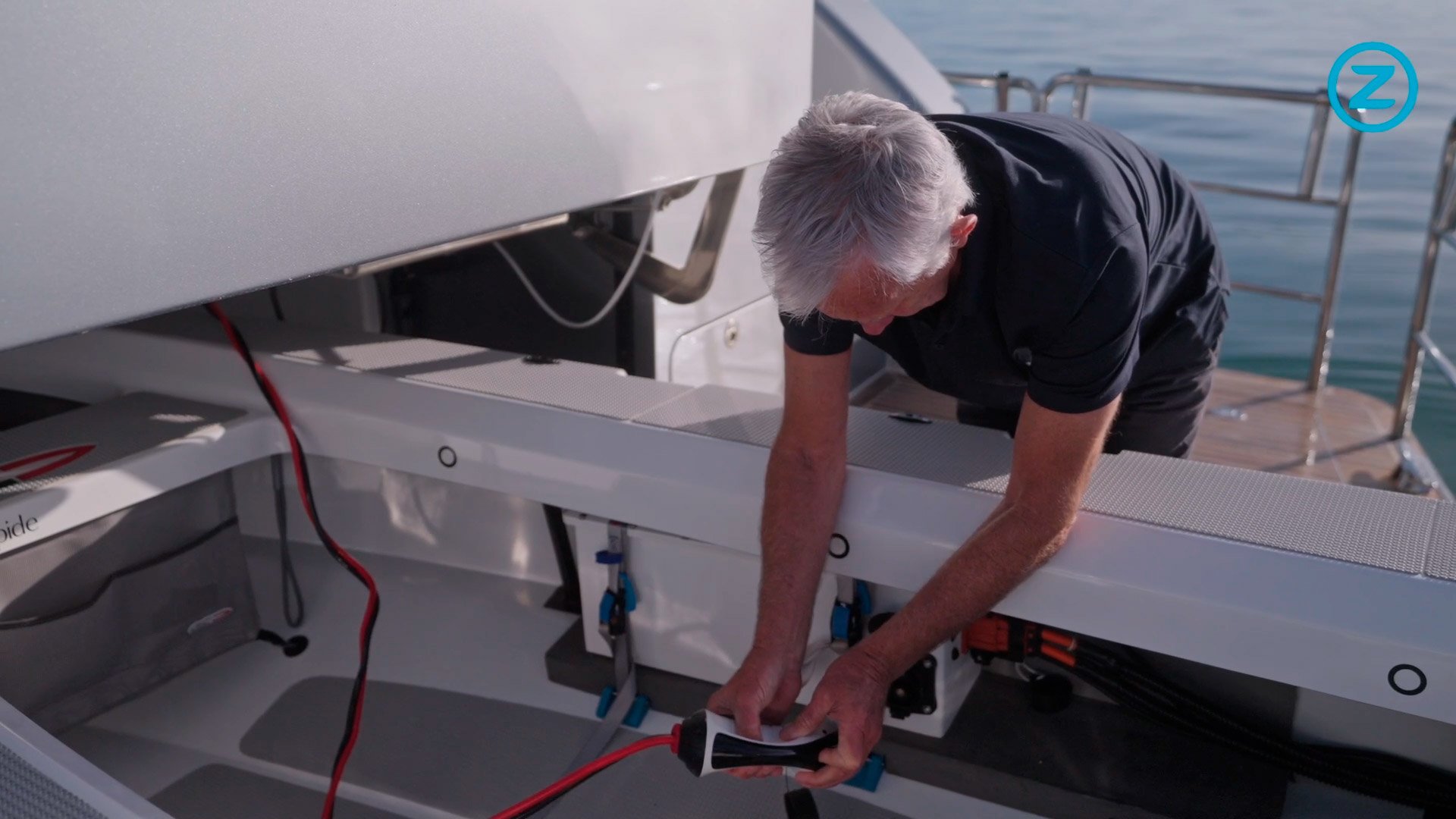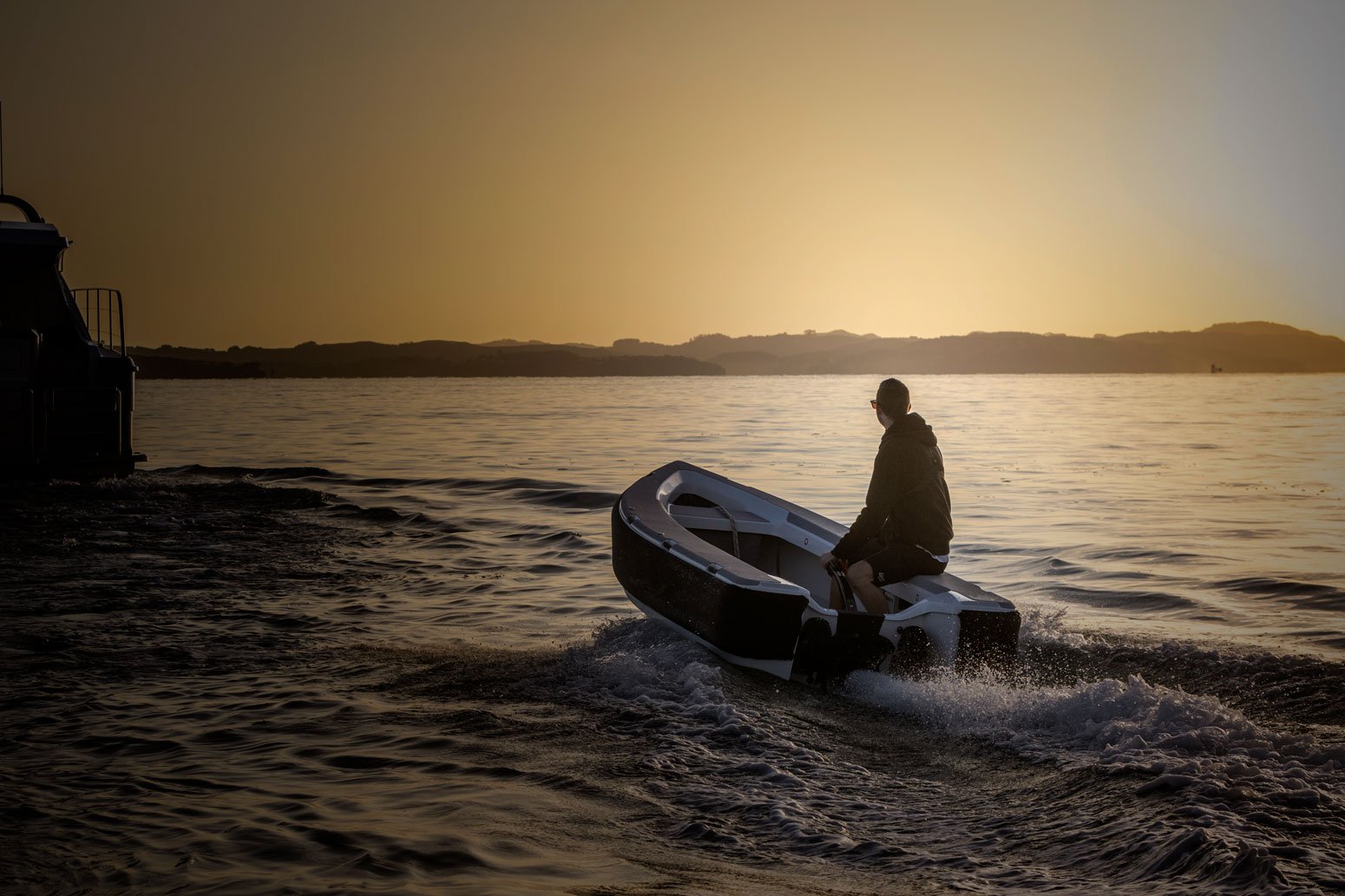
Electric boats for sale- a 2023 buyer's guide to going electric [with checklist]
Before buying an electric boat, you’ll want to make sure to get the best fit for your needs by carefully researching and comparing options. However, with an increasing amount of electric boat options available on the market today, this can be an overwhelming process. But the reward from choosing the right electric boat is a safe, functional boat that can also be used for fun water activities for you and your family! So in this article we give you an actionable guide to compare electric boat options and help find the best one for you.
Who is this electric boat buyer’s guide for?
This guide is for electric boat buyers looking for a new electric tender or electric RIB around 3-4m in length. This could be used for servicing your mothership with short trips to and from the shore, for exploring surrounding locations, and for leisure activities such as fishing, swimming and watersports.
In this guide we provide criteria which you should consider when looking at a new electric tender or electric RIB. For more details on the different types of electric boat motors please see our guide on Electric jet boat motor or electric outboard motor- which is best?
Types of electric boats
Electric boats on the market differ by electricity source, boat type, boat motor type and propulsion type.
Electricity sources: Including solar panels, generators, hydrogeneration, on-board battery packs, and hybrid (contains both an electric and fuel-powered motor). For small boats, batteries are the most common electricity source.
Boat types: These include electric launches, electric yachts, electric canal boats and electric tenders and electric RIBs. Smaller boats such as tenders and RIBs have become popular due to the practicality of being able to charge them on a larger boat and the lower range and runtime requirements compared to larger vessels.
Boat motor types:
Outboard—engine outside of hull.
Inboard—engine inside the hull.
Propulsion types:
Outboard configuration: surface drive, jet drive, and most commonly- propeller drive (think your typical outboard).
Inboard configuration: surface drive, shaft drive, stern drive, pod drive, and jet-drive.
What to look for when buying an electric tender or electric RIB
On-board space
Your tender or RIB will need to have plenty of on-board space in order to accommodate your friends and family, fishing gear or supplies. A key factor to achieve sufficient on-board space without needing to move up to a larger boat size will be buying one with the right boat motor configuration. To achieve sufficient on-board space, you’ll want to look for a tender or RIB with:
Inboard configuration (engine mounted inside the hull)- inboard electric boat motors can be fitted at a low level, or under the floor without an engine well, freeing up more space inside the boat. For example, the ZeroJet-powered OCT 350 is just 3.5m in length, yet can easily seat 4 adults (or a family of 6!). In contrast, outboard configurations often require an engine well, which takes up valuable space in the tender or RIB.
Inboard configurations like this jet boat have the motor and system located inside the hull.
Right power output for the weight
To ensure your electric tender or electric RIB performs optimally and safely, it's essential it has the appropriate power output for its weight. Insufficient power may lead to inefficient energy consumption, wear and tear, and difficulty reaching desired speeds, while an overly large motor can cause instability and safety issues.
In addition to asking “can this boat get up onto the plane easily?” you’ll want to look for a lightweight boat with:
18kW of power (20 hp equivalent)- for a tender with a length of around 3 or 4 metres, carrying 2 people on average, you should look for this range of power. However, if you intend to carry more people or heavier loads in your boat regularly, you may need to look at a different tender or RIB size and power mix.
Inboard configuration (engine mounted inside the hull)- when you buy an inboard electric tender or electric RIB, the motor and system are already installed and tested by the manufacturer to ensure that the boat has an optimised weight-to-power ratio.
Streamlined design and low profile
Buying an electric tender or electric RIB with a streamlined design and low profile offers several benefits, including ease of beaching during trips to shore, easier transportation, and the ability to explore shallow waterways and rocky areas. It also allows you to optimize storage space on your mothership as well as prevent damage during docking. Not to mention, a streamlined boat design reduces the risk of injury during accidental contact so you can be sure it’s safe for swimming off and safe for reefs, marine life, and ecology.
The key attributes of a streamlined tender or RIB design include:
Jet propulsion- unlike electric outboards, electric jets do not have long and exposed propellers and the metal shafts that come with outboard motors. Boats with electric jets are easier to beach and well-suited to shallow waterways and rocky areas.
Shallow draft- a relatively short distance between the waterline and the lowest part of the boat’s keel. Lightweight tenders or RIBs typically have shallower drafts due to less weight sinking into the water.
Easy maneuverability
A tender or RIB that maneuvers well is important so that you can avoid obstacles and accidents, navigate narrow channels and tight spaces, and dock with ease. It also means they can be used for watersports and other water activities.
Fast acceleration
Fast acceleration adds to boating fun and has practical benefits too! It improves efficiency by helping the boat get up onto the plane quickly, it provides fast action to avoid hazards, and it gets up to speed rapidly for watersports. For superior maneuverability and fast acceleration, you’ll want to look for a tender or RIB with:
A Direct Drive System- with this system, your boat will not have a gearbox- instead the motor is connected directly to the propulsion unit, allowing for faster response to throttle changes.
Jet propulsion- electric jet boat motors generally respond faster to throttle changes than propeller-driven outboards and accelerate faster. With no parts of the system protruding below the hull, jet drives typically suffer lower drag at high speeds than outboard systems. Without the need for the drag-inducing leg arrangement required for outboards, jet-powered boats typically manage to maintain a slightly higher speed.
Low maintenance
With a lower maintenance boat, you’ll have less repair and emergency costs, less time spent on its up-keep, greater confidence for boating in remote areas, and ultimately more time enjoying your tender or RIB on your favourite playground—the water!
Key features of a low maintenance tender or RIB include:
Jet propulsion- unlike electric outboards, jet propulsion units do not require a drive leg, lower unit or electrical components in an enclosure which is exposed to the elements on the transom. By nature jet units are lower maintenance as there are fewer moving parts to maintain. Additionally, the impeller, which is housed inboard, is less exposed and therefore less likely to suffer damage than the propeller of an outboard.
A Direct Drive System - boats with direct drive do not have a gearbox containing various components, meaning one less moving part for you to maintain.
Brushless DC electric motor - brushless DC motors can last tens of thousands of hours. Compared to brushed motors, they are more durable and lower maintenance due to having fewer parts and no mechanical brushes that wear out and generate heat during operation.
Optimal weight distribution
A tender or RIB with proper weight distribution has better maneuverability and stability with reduced resistance in the water. Poor weight distribution can lead to capsizing, swerving in high winds and rough waters and reduced efficiency. To assess if a boat has proper weight distribution or not, you’ll want to look for:
Inboard configuration (motor located inside the hull)- the position of an inboard motor means it gives the boat a more centralized weight and lower center of gravity, unlike boats with an outboard configuration which have their engines mounted on the transom at the back of the tender or RIB.
Any additional equipment requirements- before buying a boat, you’ll want to check if you need to buy additional stabilisers, trim tabs, or handle extenders in order to achieve proper weight distribution. This is particularly important to ask when comparing boats with an outboard configuration since inboard configured boats are typically sold with the motor already installed, so the weight distribution has already been managed by the manufacturers.

Download our Electric Boat Buyers’ Checklist for a summary of these points!
Safe system voltage
System voltage (V), relates to the amount of power an electric motor can reasonably deliver to a boat. It is important for you to consider the system voltage of an electric tender or electric RIB as you need it to strike a balance between safety and power. This balance is important since a voltage that is too high can be unsafe and increase the risk of electrical shocks or burns, while a voltage that is too low can be impractical and limit the boat's design in terms of acceleration, speed and runtime.
A safe yet practical system voltage for the electric tender or electric RIB is:
48 V - for a small boat or tender, a 48 V system is a good balance between safety and performance, assuming the manufacturer has been able to get the most out of the voltage. For example, ZeroJet designed a proprietary 48 V system that strikes this balance as it delivers a high amount of power despite the lower voltage.
Safe and durable batteries
Batteries are a crucial part of your new electric tender or electric RIB, as not only are they often the most expensive component, but they play a critical role in your boat's performance and practicality. Ensure that the electric system uses safe battery chemistry and that they are well-protected from the harsh marine environment. You will want to buy a tender or RIB powered by:
LiFePO4 batteries- a type of Lithium ion (Li-ion) battery which is well suited to marine environments. LiFePO4 batteries have a longer lifespan and better safety characteristics than alternative Li-ion battery types and have a faster charge rate and higher energy density than traditional lead acid battery types, packing the same power but in half the size or weight. This makes them ideal for your small watercraft where lower weight is crucial for fast acceleration, achieving high speeds, and efficiency. Of all Li-ion batteries including Nickel Manganese Cobalt Oxide (NMC batteries), LiFePO4 batteries have the superior battery chemistry for the following reasons:
They have the ability to be recharged as many as 3,000 times over 15 years.
They are able to sit empty for long periods without affecting their lifespan.
They are incombustible unlike other batteries with differing chemistry, so you can be comfortable using them out on the water and storing them on your mothership.
They contain no nickel or cobalt which have been linked to environmental concerns.
Protective battery cases- look for waterproof and impact-resistant cases that protect the battery packs from the elements and accidental damage.
A minimum IP rating of IP64 - the IP rating is dictated by the international IP standard which indicates the level of protection against water, dust, accidental contact, and intrusion. The higher the rating, the better the system has been designed to withstand the harsh marine environments.
Simple charging
To get the most out of your tender or RIB out on the water, you’ll want to be able to charge your boat quickly with a simple charging process. Most manufacturers recommend keeping the batteries above 20% charge so this means charging your boat frequently. For example, you may use the tender or RIB for short trips from your mothership to shore during the day, and do top-up charging in between these trips.
The key features that determine simple charging are:
A portable charger- it is important that the tender can be charged outside of the boat, whether from a dock or garage.
Efficient charging- ideally, it should take no longer than 4 hours to charge from 20-99%.
Streamlined cables- the charging cables should be easy to manage with firm connections for securing and releasing. Make sure to check the charging set-up before purchasing your electric boat to ensure a streamlined process.
Sophisticated Battery Management System
A Battery Management System (BMS) is essential for optimising your boat’s battery performance, prolonging battery life and providing the information you need to enable you to make informed decisions. You’ll want to look for a BMS that:
Prevents excessive current draw to avoid thermal runaway.
Monitors the battery’s temperature to ensure it stays within safe limits.
Provides critical information on battery health and performance to optimise energy usage.
Monitors current and throttle input for safe operation, and
Estimates battery state of charge (SOC) to prevent over-discharging, optimise charging and maximise battery lifespan.
User-friendly display
It is important that you buy an electric tender or RIB with a user-friendly display that shows how the boat is performing so that you can make informed choices about how to use your boat responsibly, and also so you never get caught short out on the water. You’ll want a display that:
Shows the battery charge/discharge rate- so you can monitor the charging process and battery status. Additionally a system with GPS or other suitable on board sensor may allow the screen to show traveling speed, and remaining estimated range and runtime based on the current battery charge level.
Shows the system status- including any alarms and warnings for issues detected in the system.
Some additional features you may want to look out for in a display include:
Enables you to lock the boat- a display that can be locked, helping to protect the boat from being stolen.
Enables you to manage the boat’s operation mode- for example, having options for an economy mode (limiting the battery consumption) and a sports mode (focus on performance).
Suitable range and runtime
The electric boat you buy needs to deliver a range and runtime suitable for your intended use. You’ll want to be particularly realistic about how you’ll be using your tender or RIB, as if you are looking to use it at speed for a long time and over long distances, you may need to look at a larger size boat and system.
The range refers to the maximum distance the boat can travel on a single battery charge, while runtime is the length of time the boat can operate continuously on a fully charged battery. The higher the range and runtime, the longer you can stay on the water without needing to recharge.
Estimated range and runtimes will be stated on many manufacturer websites. However, these are often based on standardised conditions, and the actual range and runtime can vary greatly depending on the load being carried, the weather and water conditions, and the way the boat is driven. So check for any conditions or assumptions that manufacturers have provided around their claimed range and runtime numbers.
What you’ll want to look for when assessing range and runtime suitability:
40-50 minutes runtime & 10 nautical miles range (or higher)- this is a general recommendation for those wanting to use the electric tender or electric RIB primarily to service their mothership.
An effective battery management system & informative displays- these are crucial features which will provide information on the status of your electric system and will help to alleviate any potential range anxiety.
Customer Support including warranty and after sales support
As electric boats are a relatively new technology, in order to give you some peace of mind you should check that the manufacturer stands behind their product. Before purchasing, get confirmation that the manufacturer will deliver:
A minimum 2-year warranty- on the boat and on the electric system (including batteries). If you are buying the boat for commercial use, then the warranty may be limited to certain conditions, so ensure that you check this.
Accessible after-market service- for both in-warranty and out-of-warranty repairs.
Easily available spare parts- ensure this is not just in the short-term but over the entire expected lifetime of ownership so you can manage any unexpected requirements.
You can also check online for customer reviews to gauge the level of support and service that the manufacturer provides to customers.
How to choose which electric tender or electric RIB to buy
Not all electric boat motors and systems are made equal. Some will deliver on only a portion of the criteria covered in this article, while others will deliver on many. Ultimately, choosing the right electric tender depends on your specific requirements and the importance you place on the criteria we have covered above.
Download our checklist for an easy summary of the buying criteria covered above!
ZeroJet is a pioneer of zero-compromise boating and manufacturer of electric jet propulsion systems, powering a range of electric tenders and RIBS across the globe. The ZeroJet Gen2 system has achieved sustainability, safety, practicality, and performance in one compact package, making it a world-leading marine propulsion system.
About the author:
This article was written by Stephanie Kingsford in collaboration with ZeroJet’s team of electric boat and electric jet system experts. Steph is a strategic communications specialist with a decade of experience advising and collaborating with companies on sales, marketing and communications. She and her family are based in the wonderful Waikato region of New Zealand.








